The proposed ban was developed under the EU chemicals regulation REACH by authorities from Germany, the Netherlands, Denmark, Norway and Sweden. The aim of the ban is to reduce the release of PFASs into the environment (source: https://www.baua.de/DE/Services/Presse/Pressemitteilungen/2023/02/pm08-23.html).
Since its publication, a scientific evaluation is now underway. Since March 22, the six-month public consultation period has been in effect. It is expected that a decision by the European Commission on this proposal can be expected in 2025.
What are PFAS?
PFAS stands for per- and polyfluoroalkyl substances, which are fluorinated compounds used in many products and industrial applications, including coatings, upholstery and textiles, and more. PFASs do not occur naturally (and have only been manufactured since the late 1940s). Chemically, the organic compounds consist of carbon chains of various lengths in which the hydrogen atoms are completely (perfluorinated) or partially (polyfluorinated) replaced by fluorine atoms. They are often called "eternity chemicals" because they hardly degrade in nature and accumulate in animal food and water.
This is a group of substances that includes about 10,000 individual substances.
What is the difference to PFOA/PFOS?
PFOS and PFOA are also substances of the PFAS group. A ban on PFOS (perfluorooctane sulfonic acid, C8) was already adopted EU-wide in 2006 and incorporated into EC Directive 2006/122 and the EU POP Regulation (POP stands for persistent organic pollutants). In 2019, the PFOS ban was reviewed again under the Stockholm Convention and all exemptions granted in the EU until then were removed.
The particularly relevant substance PFOA (perfluorooctanoic acid, C8) is included in the globally valid Stockholm Convention ban list for persistent organic pollutants and has been overwritten in the EU POP Regulation. The regulation in the EU POP Regulation has been in force since December 2020 (regulated in REACH Annex XVII and the 2019/1021/EC POP Regulation).
Thus, all products from DÖRKEN are PFOS/PFOA-free.
What would the possible PFAS ban look like?
Two options have been presented by ECHA:
• A complete ban without exemptions ("full ban") (RO1).
• A full ban with use-specific, time-limited exemptions (RO2).
Option 2 is more likely, as many PFAS cannot simply be replaced - it is still an essential component of extinguishing foams for large fires.
Should PFAS be included in Annex XVII of the REACH Regulation, an 18-month transition period will begin. Once this has expired, the manufacture, import and use of PFAS as such and the placing on the market and use of PFAS as a constituent of (another) substance, in mixtures or articles, if certain concentration limits are exceeded, will be prohibited. Certain uses are granted an extended transitional period of up to twelve years or even indefinite exemptions.
What is the background of the PFAS ban?
PFAS are a large family of thousands of man-made chemicals that are widely used throughout society (e.g., in textiles, electronics, food contact materials, medical devices, etc.).
The majority of PFAS are persistent substances or degrade to them in the environment. Once PFAS are released, they remain in the environment for a long time.
Due to their water solubility and mobility, contamination of surface water, groundwater, drinking water, and soils has occurred both in the EU and worldwide. It has proven difficult and extremely costly to remove PFAS once they have entered the environment.
In addition, some PFAS have been shown to have toxic and/or bioaccumulative properties, both with respect to human health and the environment.
If no action is taken, their concentrations in the environment will continue to increase, and their toxic and environmentally harmful effects will be difficult to reverse.
When can the PFAS ban be expected?
According to the Federal Environment Agency, possible restrictions are not expected until 2025 at the earliest. Currently, the public discussion phase is running (22.03.-22.09.2023), after which the final findings will be submitted to the European Commission for the adapted wording of the XVII Annex of REACH, which must be finally adopted by the REACH Committee. Then the restriction with the negotiated transition periods will take effect.
Who is affected by the PFAS ban?
The European Chemicals Agency ECHA is examining regulation in the European REACH area, with Germany and the Netherlands in the lead. Thus, Germany would be affected. However, PFASs are also under close watch in the United States. The state of Maine has already enacted a ban on PFAS by 2030. Other US states are currently preparing limits, restrictions or bans.
In addition, the U.S. EPA (Environmental Protection Agency) has issued a directive according to which all PFAS importers and manufacturers must hand over various information from the last ten years to the authorities. Further restrictions should be derived from this. PFAS compounds are also coming into focus in China and Japan with the ratification of the Stockholm Agreement.
Regulatory and political pressure is already having a major impact on some manufacturers and users: for example, 3M in California will completely stop its PFAS production in 2025, and other companies will follow.
What are the options for action?
Participation in ECHA consultation on PFAS restrictions - ECHA website
DÖRKEN itself has already participated in the consultation and will soon also contact its suppliers and customers with a pre-written letter and instructions on how to fill it out. If you would like to have these documents as well, please feel free to contact us or download here. The more arguments and use cases the industry can contribute, the greater the chance that transition periods will be extended.
Does the possible PFAS ban affect DÖRKEN's corrosion protection products?
The possible PFAS ban affects DÖRKEN's corrosion protection products. Some of our coating systems from the DELTA-PROTEKT®, DELTA®-SEAL, DELTA-LUBE® product lines contain industry-standard fluoropolymers (such as PTFE) as lubricants. We already have PFAS-free products and are researching at full speed to replace the fluoropolymers commonly used in the industry. This relates to our current knowledge, as none of the substances currently defined as PFAS in the ECHA proposal are intentionally added during production or are obviously generated during the production steps. The proposal to restrict PFAS is currently in the evaluation phase. Since it has not yet been finally clarified which criteria will be decisive for the future restriction, DÖRKEN will actively follow this topic.
Are there already PFAS-free alternatives at DÖRKEN?
DÖRKEN has already been working on PFAS-free alternatives to the current portfolio for many months. In doing so, the legal requirements are closely considered as well as possible transition periods of the ECHA. For example, our zinc flake basecoat DELTA-PROTEKT® KL 100 and our topcoat DELTA-PROTEKT® TC 502 GZ are already PFAS-free.
In the development of further/new products, DÖRKEN will not add any of the substances currently defined as PFAS in the ECHA proposal.
If you need PFAS-free products for current projects, please do not hesitate to contact us. If you are interested in being a development partner, please contact us.
 Belgium nederlands
Belgium nederlands Belgium français
Belgium français Canada english
Canada english Canada français
Canada français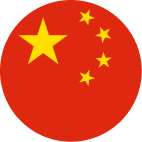 China chinese
China chinese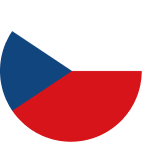 Czech Republic čeština
Czech Republic čeština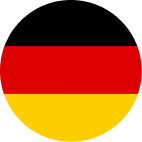 Deutschland deutsch
Deutschland deutsch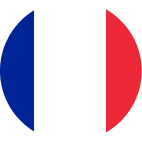 France français
France français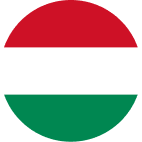 Hungary magyar
Hungary magyar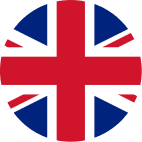 International english
International english Italy italiano
Italy italiano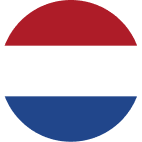 Netherlands nederlands
Netherlands nederlands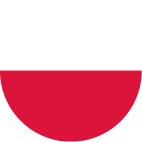 Poland polski
Poland polski Russia русский
Russia русский Slovakia slovenčina
Slovakia slovenčina Switzerland français
Switzerland français Switzerland deutsch
Switzerland deutsch Turkey Türkçe
Turkey Türkçe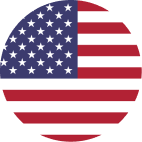 USA english
USA english.png)